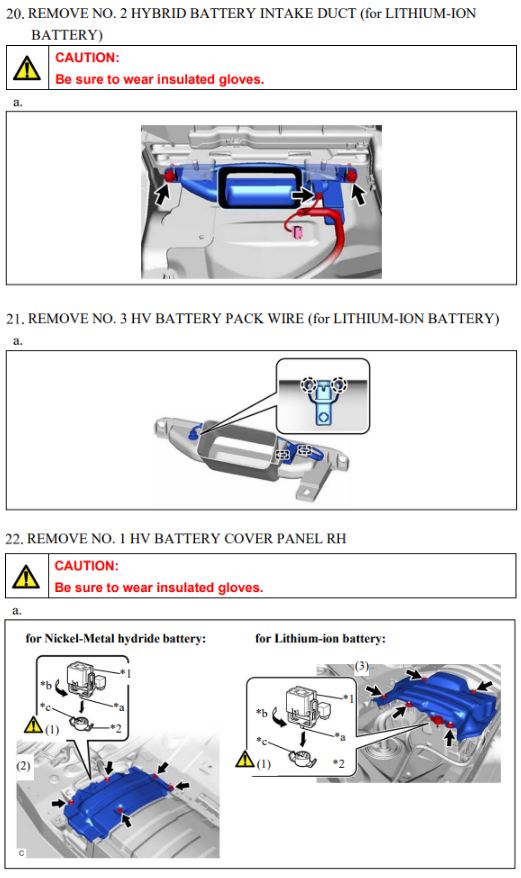
Last week, Toyota Canada informed dealers that they are approved to replace the power cable to the rear motor on RAV4 hybrid and Prime models at no charge, even for customers who had already agreed to contribute an amount toward the repair. Toyota dealers began contacting customers on their waiting lists for the repair and inviting them to bring in their vehicles, indicating that the supply of replacement parts has improved somewhat. Consumers writing to the APA are happy to report that their contributions of $500-$1500 toward repairs needed after the end of the short 3-year/60,000 km base warranty have been waived.
For now, Toyota Canada’s no-charge repair appears to be discretionary, with no time or mileage limit specified. Dealers were told only RAV4s with a lit dashboard warning are eligible. Customers who are experiencing interference on the AM radio band (a sign that the connector is corroding), or who wish to replace the cable after a visual inspection reveals some corrosion, are not eligible. Those customers can either wait until the problem worsens and triggers the dash warning, or pay for the repair on their own out of an abundance of caution.
A Toyota Canada spokesperson told Marie-Ève Fournier of La Presse, the Montreal French language daily, that the no-charge repairs were being undertaken as part of Toyota’s investigation (to obtain samples of corroded cables). Toyota’s explanation is a cover story while they consider the way forward. An automaker doesn’t have to provide free repairs to obtain samples of old parts; they need only ask dealers to turn them in, sometimes in exchange for a small deposit, called a “core charge.”
Backgrounder
In the spring of 2022, the APA wrote Toyota Canada to request a warranty extension on the cable that sends power to the rear electric motor on the 2019-2021 RAV4 hybrid and 2020-2021 RAV4 Prime plug-in hybrid, after reports of costly failures. A connector at the end of the cable is poorly shielded and vulnerable to corrosion from salt-laden winter road spray and underbody car washes. The replacement assembly costs about $3,500 and takes 10-12 hours to install. The issue has been pursued vigorously by a RAV4 owners Facebook group that is reported to have more than 5000 members. Requests to authorize class actions were filed, first in Quebec (French | English), and more recently in New Jersey.
The way forward
The APA welcomes Toyota waiving the cost to replace the hybrid power cable, but the automaker still has a way to go. The APA wants to see the following commitments from Toyota Canada:
- A time and mileage limit for no-charge repairs of 8 years/160,000 km or 10 years/200 000, equivalent to the warranty on the rest of the hybrid drive systems of the affected vehicles.
- Reimbursement of the expensive repairs incurred by Toyota owners prior to the no-charge offer
- A dealer inspection and preventive maintenance program to save connectors that are not excessively corroded. A non-conductive grease to seal the connection, and better shielding are two possible solutions suggested to the APA by vehicle owners with some experience in this area.
- Send written notices to owners about the warranty extension
- Toyota to monitor the failure rates on other all-wheel-drive hybrids like the Prius AWD and Highlander to determine if they have a similar weakness, and to respond before the failures become critical.
- Drop the price of the replacement cable significantly.
For consumers who are considering the purchase of a RAV4 hybrid or Prime plug-in, the APA continues to recommend them. The Association believes that by the time the short base warranty on a 2023 model runs its course, Toyota or the aftermarket will have developed a solution if the modified connector introduced partway through the 2021 model year proves to be deficient.
Corolla Cross Hybrid
An APA member recently informed the APA that the new Corolla Cross hybrid has a different placement for the connector. It’s situated on the floor of the trunk inside the vehicle where it is much better shielded from the elements.
Moving the connector to inside the vehicle seems to be so simple a solution that the APA is surprised Toyota did not implement it earlier – pehaps there were technical or safety concerns that gave them pause.

